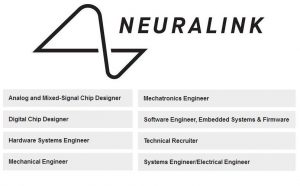Ministry of Defence
p.35
Sensory augmentation
Sensory augmentation aims to extend the sensory range or acuity either by using gadgets or wearables to ‘translate’ external information for the human senses or by modification of innate senses. Information can be collected through a combination of sensors mounted or implanted on the body. The senses can be extended by translating frequencies beyond the normal human range into frequencies that can been seen, heard or otherwise detected. This could allow the user to ‘see’ through walls, sense vibrations and detect airborne chemicals and changes to magnetic fields. More invasive options to enhance existing senses have also been demonstrated, for example, coating retinal cells with nanoparticles to enable vision in the infrared spectrum.
p.12
Future opportunities. The potential applications of brain interfaces are staggering. Therapeutic benefits could include: cure of paralysis; restoration of sight and hearing; mental health management; and treatment for Alzheimer’s disease. Brain interfaces could also be used as powerful diagnostic tools and inform the development of other human augmentation technologies and methods. In terms of augmentation, brain interfaces could: enhance concentration and memory function; lead to new forms of collaborative intelligence; or even allow new skills and knowledge to be simply ‘downloaded’. Manipulating the physical world with thoughts alone would also be possible; anything from a door handle to an aircraft could, in theory and more recently in practice, be controlled from anywhere in the world.
The project is a bilateral cooperation between Bundeswehr Office for Defence Planning in Germany and the Development, Concepts and Doctrine Centre in the UK. The output from the strategic implications project will be relevant to a wide audience across the defence and security sector. Whilst this is not a scientific publication, it draws extensively on research to provide an overview of where the key opportunities and threats are. Many technologies that have the potential to deliver strategic advantage out to 2050 already exist and further advances will undoubtedly occur.
Key deductions and insights (p.23)
•People have sought to augment themselves since the dawn of humanity – but over the next 30 years our ability to manipulate the human body will radically improve.
•Human augmentation encompasses science and technologies that optimise or enhance human performance.
•There are many different definitions of human augmentation. Finding consensus and an agreed approach to human augmentation will be essential in allowing different disciplines to collaborate effectively and realise its benefits.
•We need to adopt a human-centric approach to realise the opportunities of human augmentation. Thinking of the human as a platform – with physical, psychological and social aspects – will be central to this.
•Increasing data, complexity and speed is challenging the role of people in war but will not replace them: war is a human endeavour; people have skills that are still unrivalled by machines; and cultural and societal norms will take time to accommodate the role of machines.
•Human augmentation is inevitable because: we have already developed technologies and there is no going back; there are threats and opportunities that we should address; and there is a growing demand from society.
Human_Augmentation_SIP_access2


![Invisible facts and perceptual illusions - David Copperfield vanishing the Statue of Liberty e837b00f28f4003ecd0b4401ef444f94eb6ae3d01db316419df5c37e_640[1]](https://cognitive-liberty.online/wp-content/uploads/e837b00f28f4003ecd0b4401ef444f94eb6ae3d01db316419df5c37e_6401-300x200.jpg)

![Lumen naturale eb32b70f29f01c3e815b410cee45449efe76e7d11bb6114596f6c2_640[1]](https://cognitive-liberty.online/wp-content/uploads/eb32b70f29f01c3e815b410cee45449efe76e7d11bb6114596f6c2_6401-300x191.jpg)
![Phone Hackers: Britain's Secret Surveillance eb34b40b2ff7023ecd0b4401ef444f94eb6ae3d01cb4164292f6c37c_640[1]](https://cognitive-liberty.online/wp-content/uploads/eb34b40b2ff7023ecd0b4401ef444f94eb6ae3d01cb4164292f6c37c_6401-300x300.png)